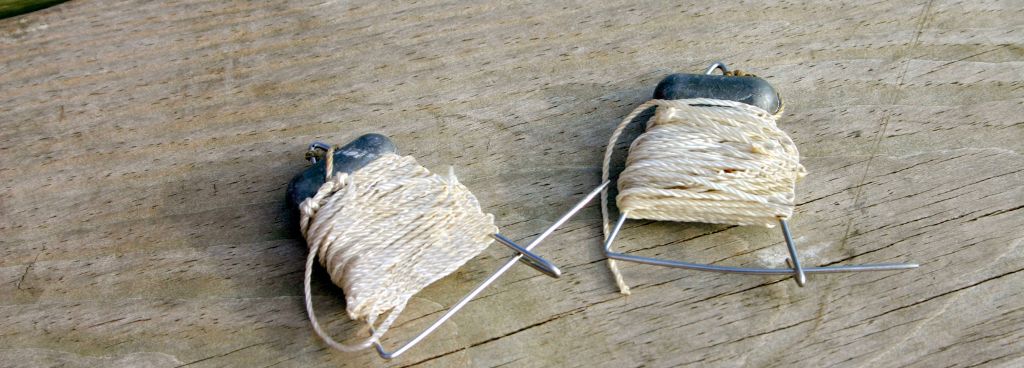Stories Worth Reeling In...
Last Updated on October 6, 2023
Curly fishing lines are a common occurrence, and they can turn a promising day of fishing into a tangled mess. The curling not only disrupts the precision of our casts but also reduces our casting distance, making it difficult to reach those elusive fish. It’s like trying to dance with two left feet—it just doesn’t flow as smoothly as we’d like.
But fear not, my fellow anglers, for in this blog post, we’ll unravel the mystery of curly fishing lines. We’ll uncover the reasons behind this vexing issue and explore ways to tackle it head-on. From understanding the causes to preventing and managing the curls, we’ll equip you with the knowledge and techniques to untangle the frustration and make your fishing trips a breeze.
So, fasten your fishing hats and get ready to master the art of managing curly fishing lines. Tight lines and untangled casts await you!
Table of Contents
Let’s dive in and shed some light on the mysteries that make our lines curl.
Imagine your fishing line as having a memory of its own—something that causes it to remember its previous coiled state. This phenomenon is known as “memory” in fishing lines. Memory is most commonly found in monofilament lines, but it can also affect fluorocarbon and braided lines to some extent.
Over time, when fishing lines are wound around a spool or exposed to certain conditions, they develop a tendency to retain that coiled shape. When you unspool your line for a cast, it may still carry the memory of being wound up, resulting in unwanted curls and loops as it leaves the reel.

Ah, the subtle art of spooling—something that can make all the difference between smooth sailing and a tangled mess. Proper spooling techniques are crucial to minimize line twists, a major culprit in causing curly fishing lines.
Improper spooling, such as loading the line too tightly or with twists and kinks, can lead to line twists during casting and retrieving. Line twist causes the line to spin, creating coils and knots that result in those maddening curls. Using incompatible line types on your reel can exacerbate this issue.
Just like different baits entice different fish, the type of fishing line we use can play a significant role in whether our lines stay straight or curl up like mischievous waves.
It’s actually fairly straightforward. Line twist will make its way up the line if the end of the line – the bait, lure, or fly end – can rotate around its own axis. The twist will move up the line when an additional line is released from the reel. A good way to produce line twists is to use swivels that do not swivel.
Monofilament lines — the classic choice for many anglers. Monofilament lines are known for their flexibility and ease of use. However, they are more susceptible to memory and curling compared to other line materials. Due to their softer composition, monofilament lines can retain coiling from being wound on the reel, leading to frustrating curls during casting.
Fluorocarbon lines — a popular choice for their low visibility underwater. Fluorocarbon lines have less memory than monofilament, which means they are less prone to curling. However, they can still develop some coils over time, especially if not spooled and maintained correctly.
Braided lines — revered for their strength and sensitivity. Braided lines are less likely to retain memory, making them the least prone to curling among the three types. Due to their tight, woven construction, braided lines deliver smoother casts with fewer curls and twists.
We may encounter those maddening curly fishing lines while out on the water; fear not, for I bring you a treasure trove of quick fixes to untangle those knots and get back to smooth sailing on your fishing trip.
Step-by-Step Methods to Remove Line Curls on the Spot: When faced with tangled and curly fishing lines during your fishing expedition, follow these step-by-step techniques to swiftly tackle the issue:
Preventing Further Curling While Fishing: To prevent those pesky curls from making an encore appearance during your fishing trip, consider these preventive measures:

With these tried-and-true techniques, you’ll be well-prepared to steer clear of those frustrating curls and knots.
2. Tips for Maintaining and Storing Fishing Lines: Properly maintaining and storing your fishing lines can help extend their life and reduce curling:
Braided lines tend to have less line memory compared to monofilament and fluorocarbon lines. However, all lines can develop curling if not stored correctly.
Yes, curly fishing line can reduce casting distance, accuracy, and overall performance, as it can create resistance when passing through rod guides.
Remember, each cast is a new opportunity to test your newfound techniques and strategies. Let curiosity be your guide, and let your passion for fishing guide your way. With each trip, you’ll gain confidence in managing your fishing lines and untangling those curls like a seasoned sailor.
Tight lines and smooth sailing await you, my fellow anglers. Until we meet again on our next fishing quest—happy fishing!